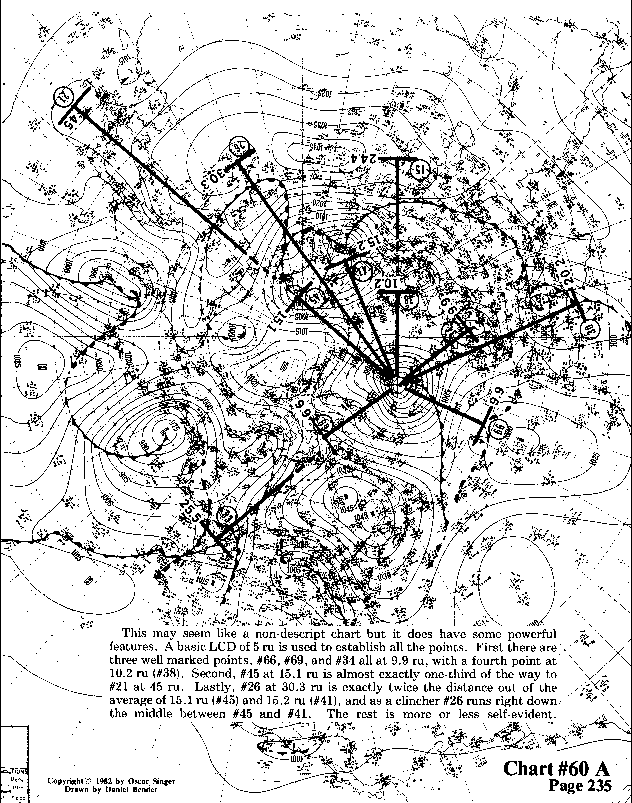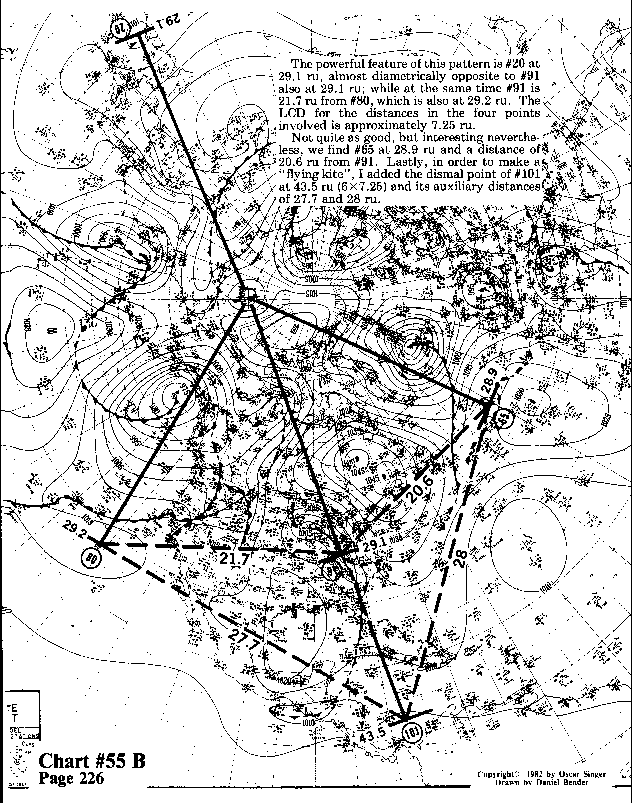
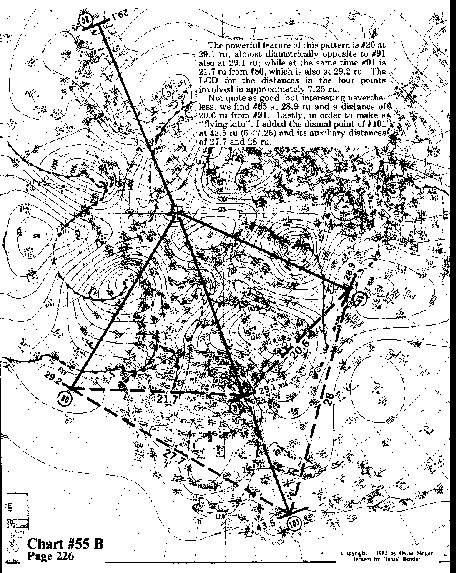
The powerful feature of this pattern is #20 at 29.1 ru, almost diametrically opposite to #91 also at 29.1 ru; while at the same time #91 is 21.7 ru from #80, which is also at 29.2 ru. The LCD for the distances in the four points involved is approximately 7.25 ru.
Not quite as good, but interesting nevertheless, we find #65 at 28.9 ru and a distance of
20.6 ru from #91. Lastly, in order to make a "flying kite", I added the dismal point of #101
at 43.5 ru (6x7.25) and its auxiliary distances of 27.7 and 28 ru.

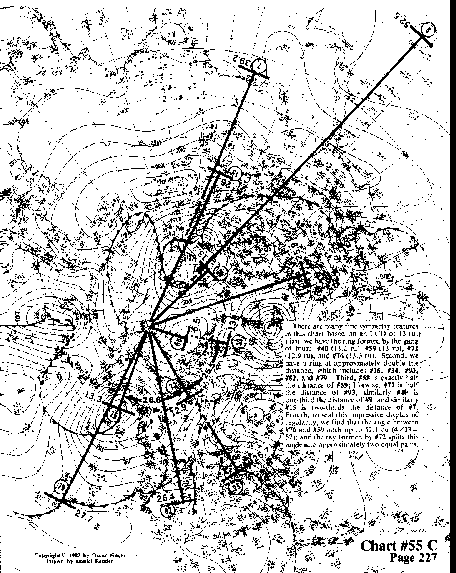
There are many fine symmetry features in this chart based on an LCD of 13 ru.
First, we have the ring formed by the gang of four: #40 (13.2 ru), #59 (13 ru),
#72 (12.9 ru), and #76 (13.3 ru). Second, we have a ring at approximately double the
distance, which includes #15, #34, #93, #82, and #79.Third, #58 is exactly half the
distance of #59, likewise, #72 is half the distance of #93; similarly #40 is
onethird the distance of #9; and similarly, #15 is twothirds the distance of #7.
Fourth, to seal this impressive display of regularity, we find that the angle between
#76 and #59 adds up to 52.1 cu (4X13=52); and the ray formed by #72 splits this angle
into approximately two equal parts.
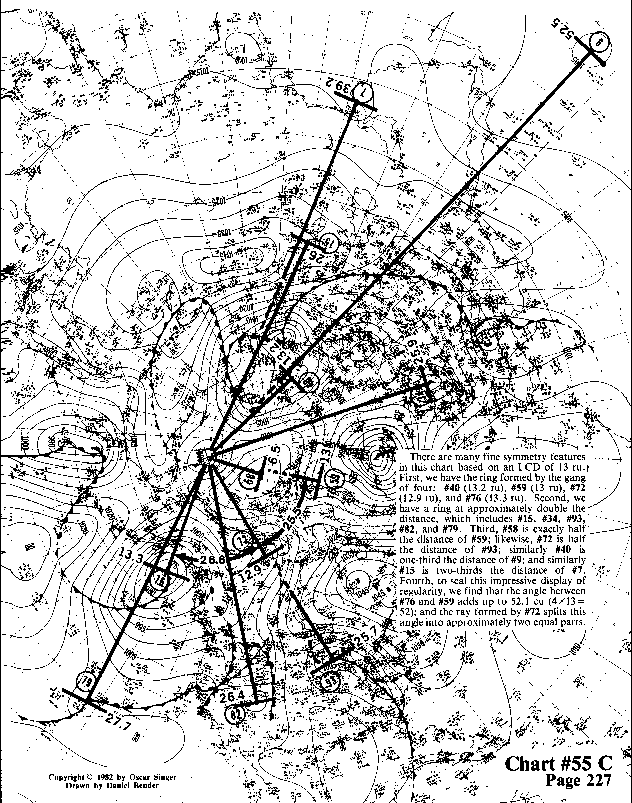
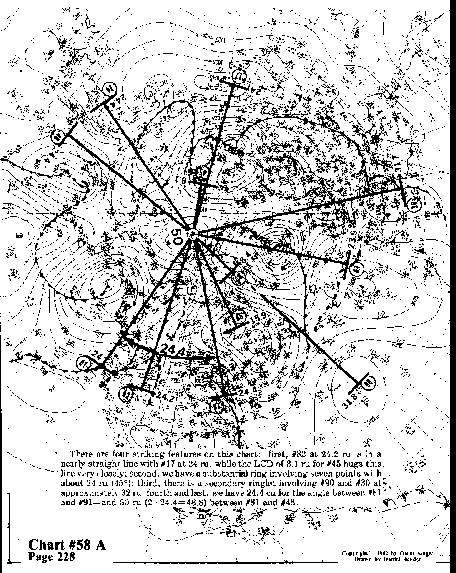
There are four striking features on this chart: first, #82 at
24.2 ru is in a nearly straight line with #17 at 24 ru, while
the LCD of 8.1 ru for #45 hugs this line very closely; second,
we have a substantial ring involving seven points with about
24 ru which is equal to 45 degrees; third, there is a secondary ringlet involving
#90 and #30 at approximately 32 ru; fourth and last, we have
24.4 cu for the angle between #81 and #91--and 50 cu (2x24.4=48.8) between #81 and #48.
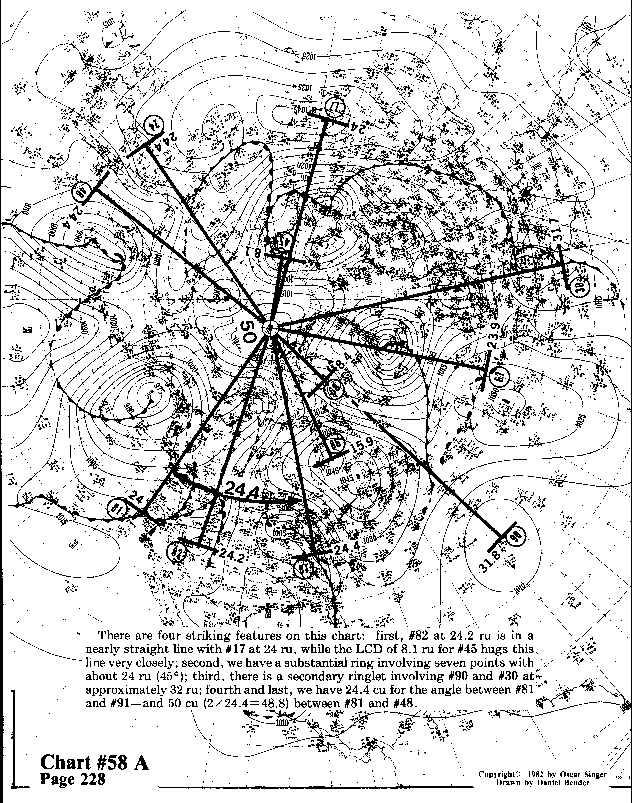
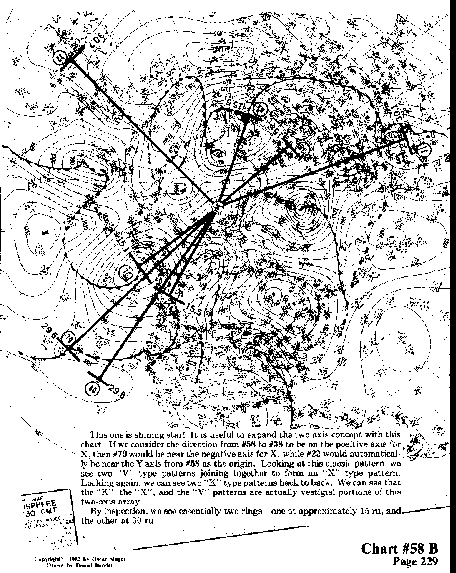
This one is shining star! It is useful to expand the two axis concept with this chart. If we consider the direction from #58 to #38 to be on the positive axis for X, then #79 would lie near the negative axis for X, while #22 would automatically be near the Y axis from #58 as the origin. Looking at this classic pattern, we see two "V" type patterns joining together to form an "X" type pattern. Looking again, we can see two "K" type patterns back to back. We can see that the "K", the "X", and the "V" patterns are actually vestigial portions of this two-axis array.
By inspection, we see essentially two rings--one at approximately 15 ru, and the other at 30 ru.
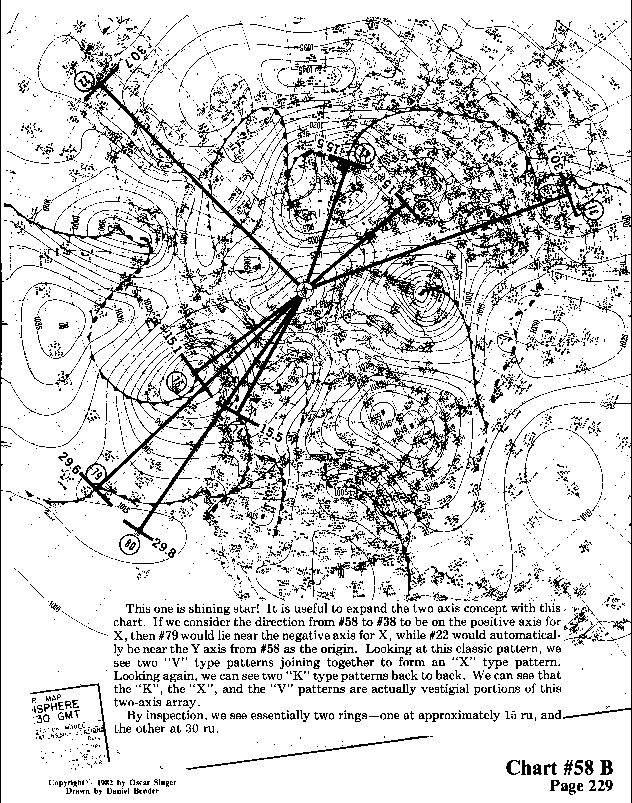
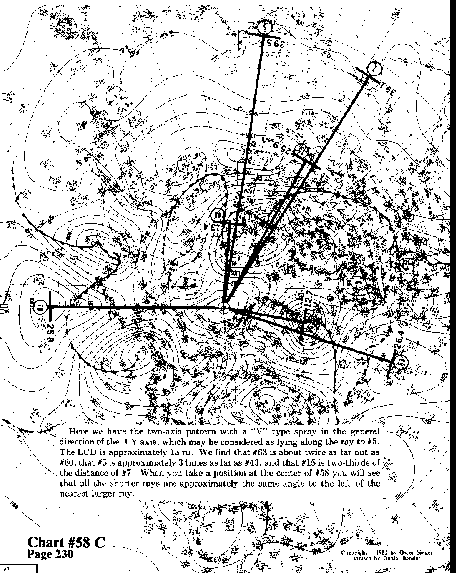
Here we have the two-axis pattern with a "V" type spray in the general
direction of the + Y axis, which may be considered as lying along the ray to #5.
The LCD is approximately 13 ru. We find that #63 is about twice as far out as
#60; that #5 is approximately 3 times as far as #43; and that #15 is two-thirds of
the distance of #7. When you take a position at the center of
#58 you will see that all the shorter rays are approximately the
same angle to the left of the nearest larger ray.
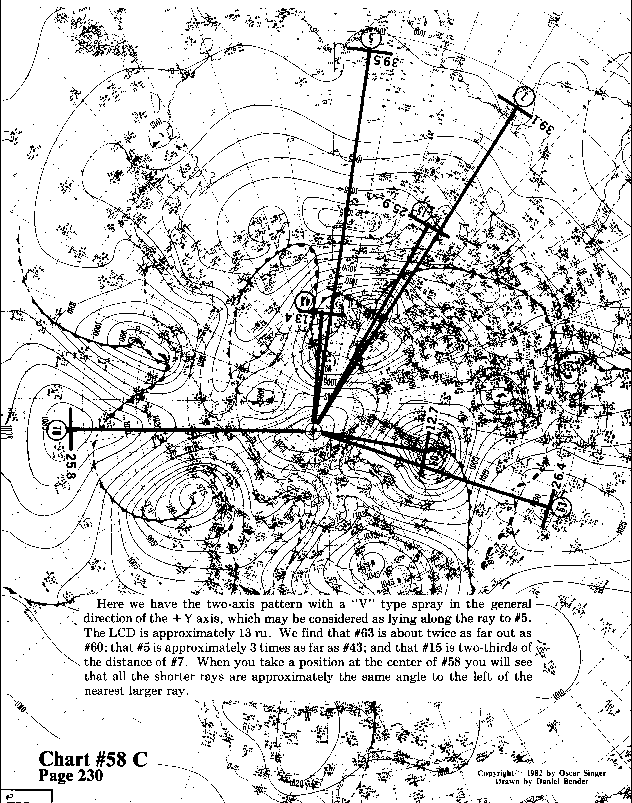
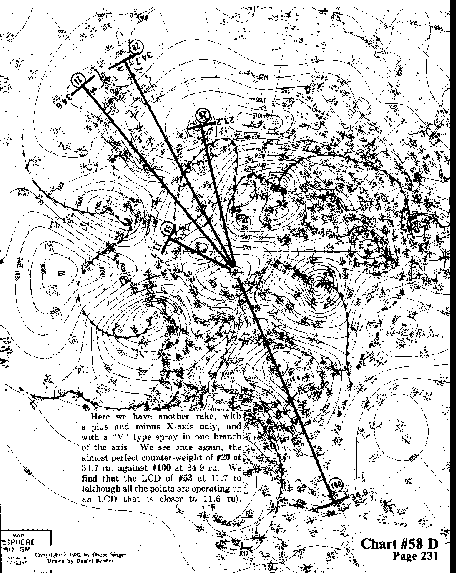
Here we have another rake, with a plus and minus X-axis only, and
with a "V" type spray in one branch, of the axis. We
see once again, the almost perfect counter-weight of #20 at 34.7
ru, against #100 at 34.9 ru. We find that the LCD of #53 at 11.7
ru (although all the points are operating on an LCD that is closer
to 11.6 ru).
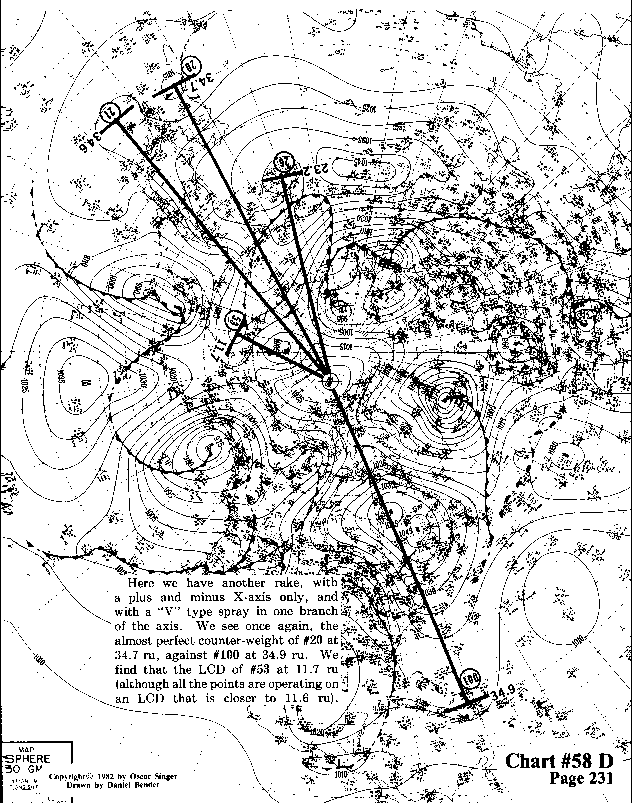
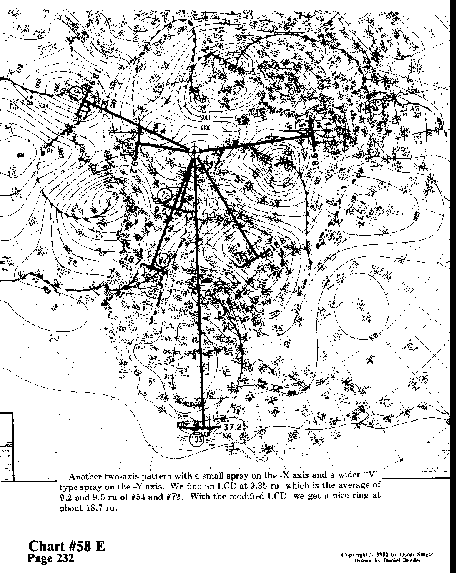
Another two-axis pattern with a small spray on the X axis and
a wider "V" type spray on theY axis. We find an LCD
at 9.35 ru, which is the average of 9.2 and 9.5 ru of #54 and
#72.
With the modified LCD, we get a nice ring at about 18.7 ru.
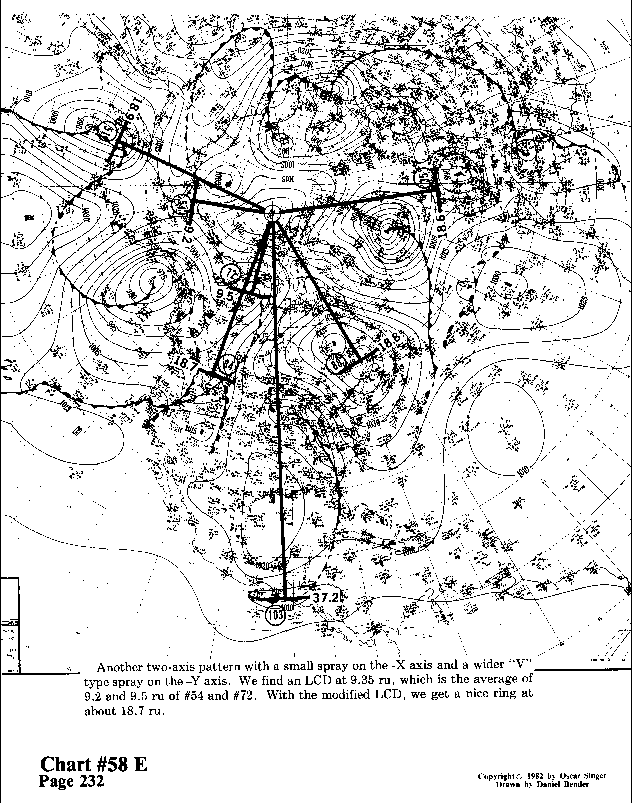
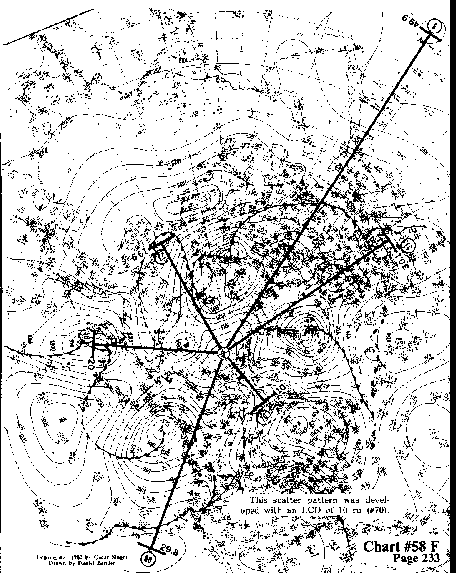
This scatter pattern was developed with an LCD of 10 ru (#70).
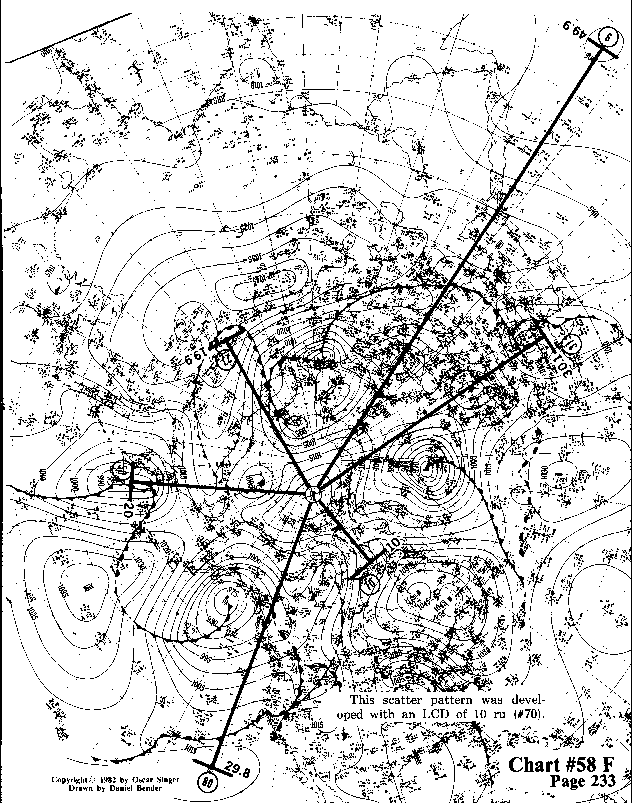
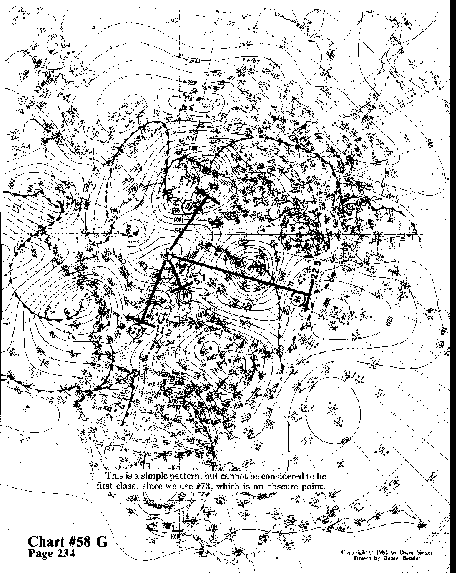
This is a simple pattern, but cannot be considered to be first class, since we use #73, which is an obscure point.
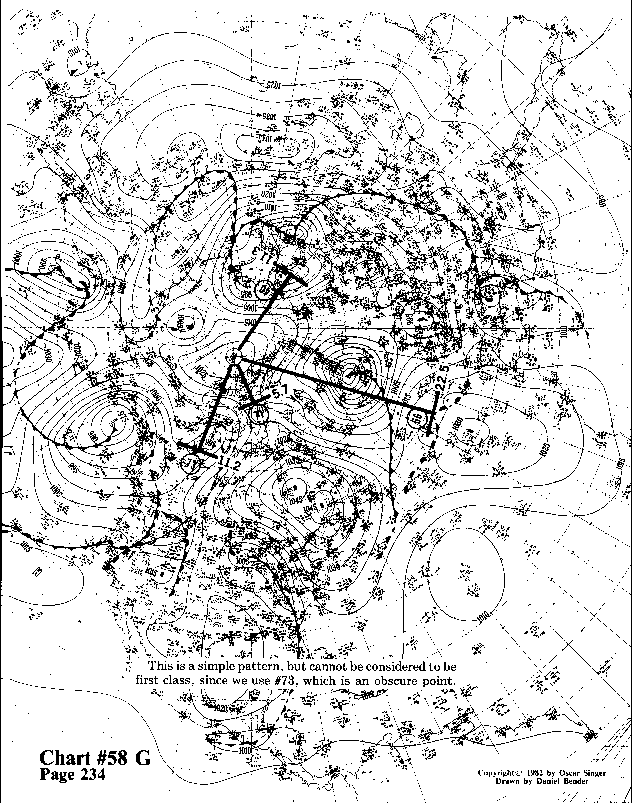
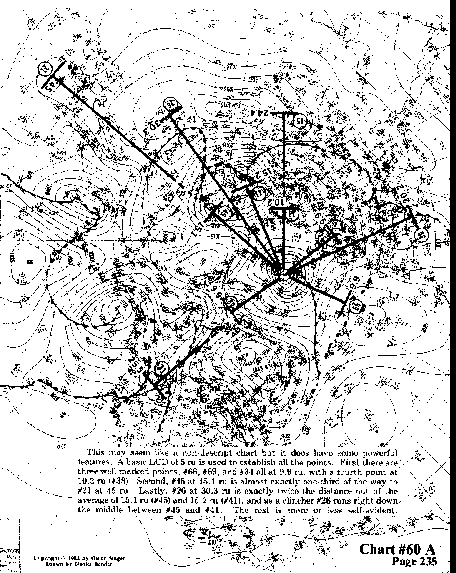
This may seem like a nondescript chart but it does have some powerful
features. A basic LCD of 5 ru is used to establish all the points.
First there are three well marked points, #66, #69, and #34 all
at 9.9 ru, with a fourth point at 10.2 ru (#38). Second, #45 at
15.1 ru is almost exactly one-third of the way to #21 at 45 ru.
Lastly, #26 at 30.3 ru is exactly twice the distance out of the
average of 15.1 ru (#45) and 15.2 ru (#41), and as a clincher
#26 runs right down the middle between #45 and #41. The rest is
more or less self-evident.
